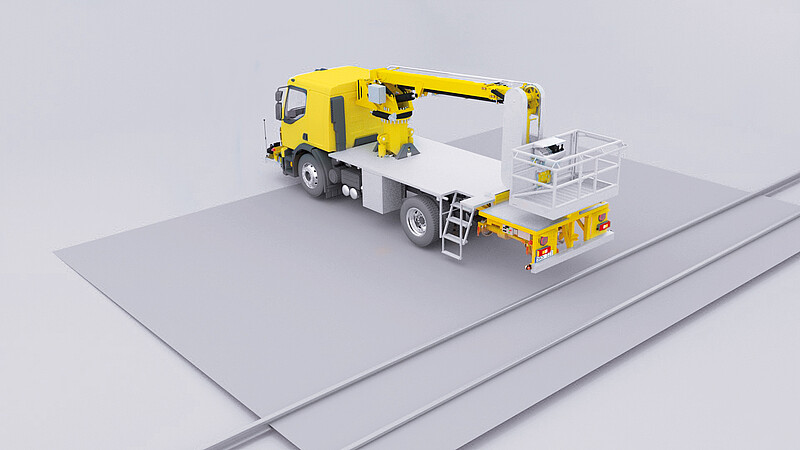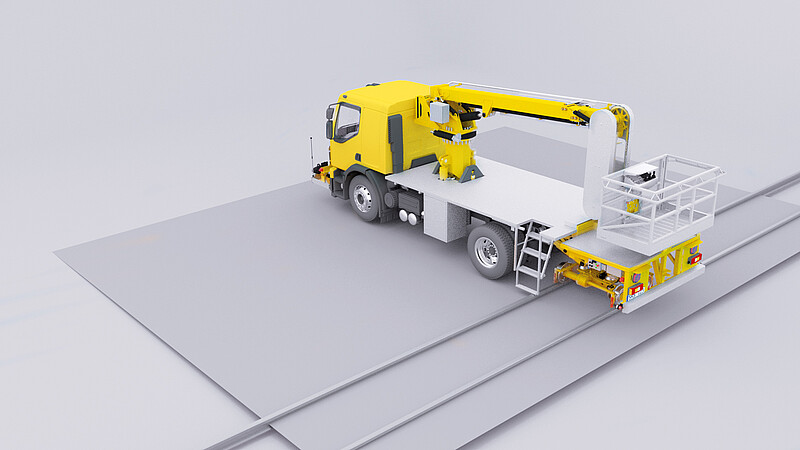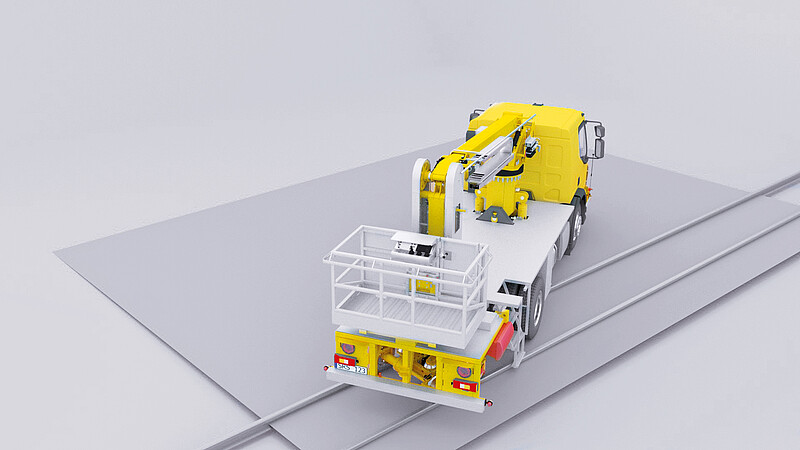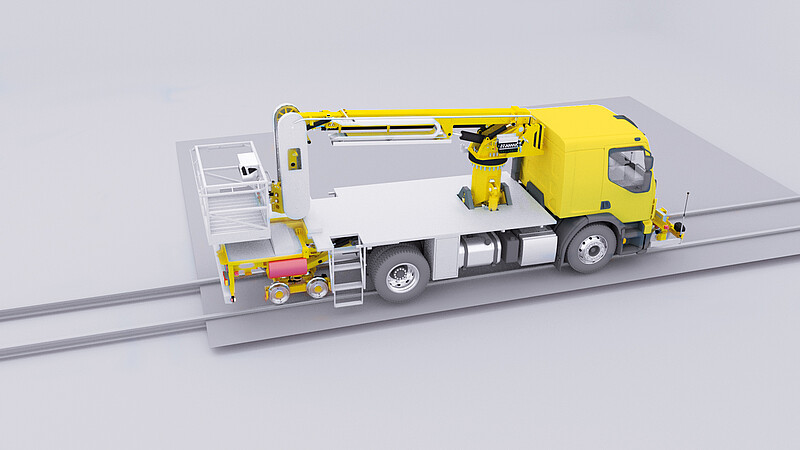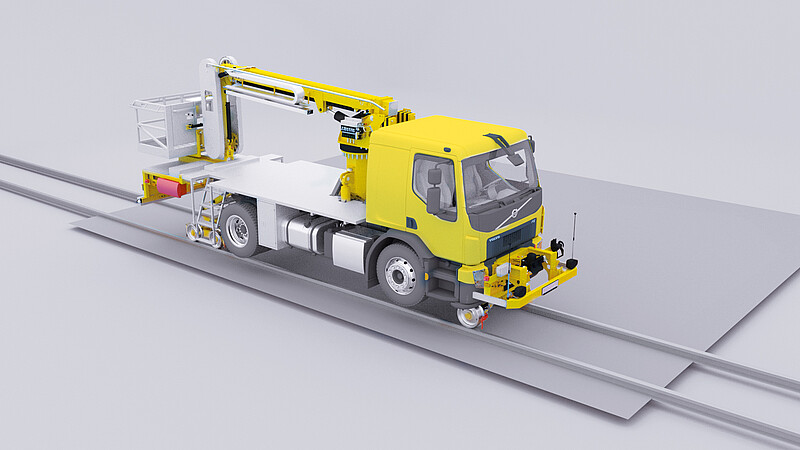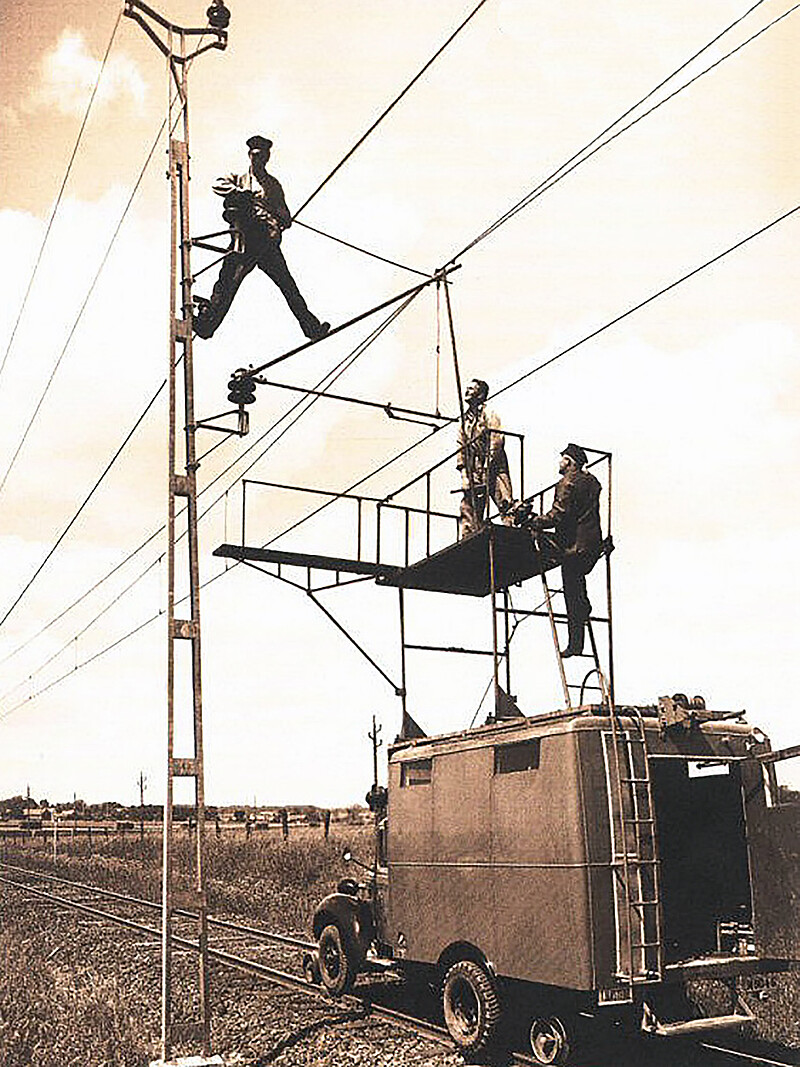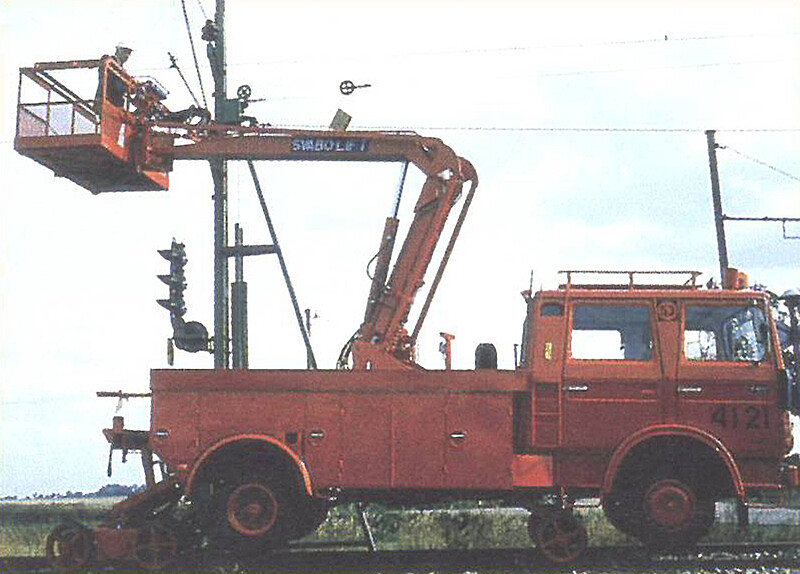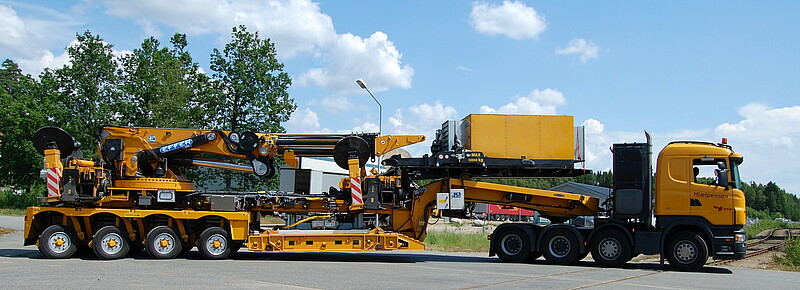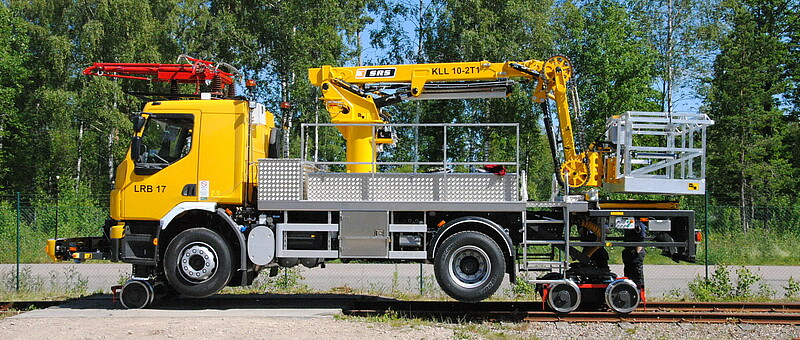Road-rail vehicles
The transportation of goods, merchandise and people by rail is steadily increasing. This in turn results in more wear of the rail infrastructure leading to a higher amount of maintenance work, shorter repair intervals and lower track availability to carry out maintenance work. Road-rail vehicles are used to support maintenance personnel to further improve their efficiency on site and to quickly and cost-effectively repair any faults. In addition, road-rail vehicles are also extensively used on construction sites, e.g. to install overhead lines.
Due to their excellent flexibility, road-rail vehicles offer many advantages in comparison to rail-bound service vehicles:
They are designed for use on roads and railway track. Standard rubber tires are used for the road and there is also a special system to allow the vehicle to run on railway track. In this process the vehicle is raised and then stands on rail wheels which control the drive and brakes.
The drive of the rail wheels is mainly achieved using three technologies:
- Friction-wheel drive – the rubber tyres drive a steel shaft which is connected to the rail wheels.
- Hydrostatic drive – hydraulic motors drive a steel shaft which is connected to the rail wheels.
- Rubber tyre drive – the rubber tyres on the vehicle drive and brake on the rails while the rail wheels are only used for guiding.
The European standard EN 15746-1 assigns the two-way machines and the associated equipment to the railway applications superstructure due to their primary application for the maintenance of railway infrastructure.
In the following, the focus is on self-propelled road-rail vehicles which are able to work and drive on railway track.
From the road to the track
Road-rail vehicles are designed to only block the track for a short period in order to minimize interruptions to the railway service.
A section of single track is required for the vehicle to mount or leave the track, whereby railway road crossings are mostly used. For this purpose, modern vehicles require a railway crossing with a width in the range of 3 to 5 meters to carry out the process in only 2 minutes.
The process of mounting onto the track is shown in the following pictures:
1. When mounting the track, the road-rail vehicle reverses to the track so that the rear end of the bogie is positioned above the track.
2. The bogie is lowered with hydraulics onto the track and the rear end of the vehicle is raised from the road.
3. The front road wheels are aligned to follow the movement of the vehicle. While the rear bogie is driven backwards, the vehicle is raised onto the track. This enables the vehicle to drive in the line of a curve without restricting the space of the adjacent track.
4. When the vehicle has reversed into the right position on the track, the front rail wheels are directly above the rails. The front rail wheels are now lowered with hydraulics onto the track. The front road wheels are lifted from the railway crossing.
Application areas
There are many application examples for road-rail vehicles. The following examples show road-rail vehicles used for maintenance activities on main lines and local transport systems:
- Overhead line installation and inspection vehicles
- Maintenance, bridge and tunnel vehicles (e.g. for inspection)
- Multi-functional vehicles with a variety of equipment (modules)
- Welding vehicles
- Crane and recovery vehicles
Equipment criteria
In the design of road-rail vehicles, the main focus is on the track gauge. Here it must be ensured that moving parts do not protrude over the adjacent track or come into contact with the overhead lines. In addition, structural stability, safety when leaving the track and driving safety are all very important. Furthermore, the vehicles have to be fitted with signal lights and acoustic warnings that operate when the vehicle moves in both directions.
Road-rail vehicles can be moved quickly by road to the point of deployment. The maximum road speed in this respect will depend on the statutory regulations and the vehicle model. A realistic driving speed is 80 km/h; however, the national regulations must be observed. The vehicle can be driven as close as possible to the construction site. This reduces the transport time on the rails to a minimum and the work on the track is more effective. The vehicles can also reach a speed of up to 100 km/h on the track and therefore can be moved quickly. However, the regulations in this respect vary from country to country.
In addition to this flexibility, road-rail vehicles can also be equipped with a wide range of modules tailored exactly to the application in question. Examples here are lifting platforms, generators, snow cutters or brush cutters, and many other accessories are conceivable. The provision of equipment designed to meet special applications transforms the road-rail vehicle into a multi‑functional vehicle which as well as maneuvering heavy loads is also able to carry out repairs, maintenance work, and rescue work.
The development of the road-rail vehicle over the generations
With the friendly cooperation of Goldschmidt

